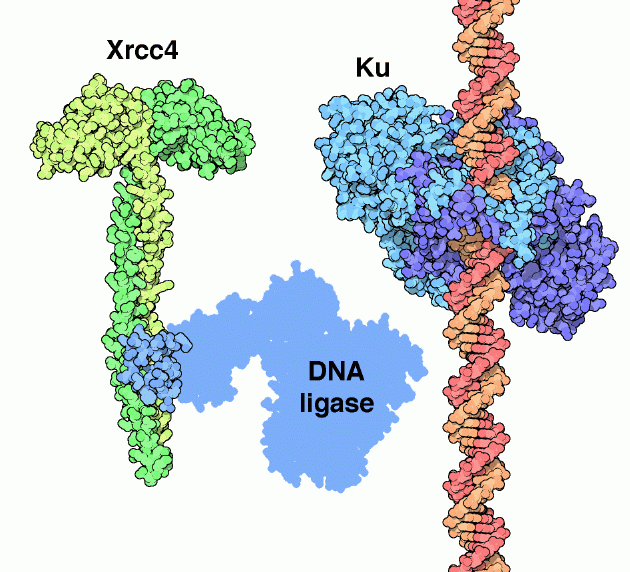|
Inhaltsübersicht | Nanomaschinen | Moleküle | Programme | Kurse | Fun | Links |
||
| > |
DNA Ligase
Non-Homologous End Joining
One of the important reactions performed by DNA ligase is non-homologous end joining. This occurs when both strands of the DNA break, and the cell has to glue it back together. It is an emergency repair system, so it may introduce an error or two in the genetic information as the two ends are prepared for rejoining, but that is certainly better than leaving the DNA in fragments. A few of the molecules involved in the process are shown here. The Ku protein, from PDB entry 1jey, and a DNA-dependent protein kinase (not shown) are though to bring the two ends together and hold them in place. Notice how the two subunits of Ku have arms that wrap around the DNA strand. DNA ligase, assisted by the Xrcc4 protein (shown from PDB entry 1ik9), seal the strands back together. The DNA ligase is shown as a schematic, since the atomic structure of the human form has not yet been solved.Next: Exploring the Structure
Previous: DNA Ligase

Last changed by: A.Honegger,